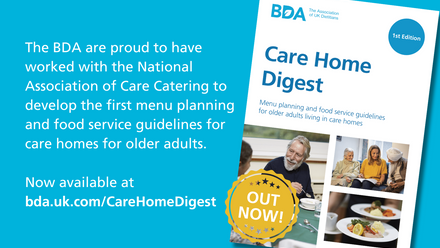If you have been diagnosed with a wheat allergy you will need to avoid any food containing wheat as the wheat protein can cause an allergic reaction. Strict avoidance is particularly important if you have an immediate allergy to wheat (known as IgE-mediated). If you have a wheat intolerance you may be able to tolerate small amounts of wheat.
If you think you may have coeliac disease check out our Food Fact Sheet here.
A dietitian will be able to support you with your wheat-free diet. They can tell you which foods to avoid, help you to find suitable alternatives, and ensure that your diet remains balanced and nutritionally sound.

Do I need to avoid gluten?
Gluten is a protein found in wheat. Having a wheat allergy does not necessarily mean that you need to avoid gluten. Most wheat-free products are gluten-free unless they contain rye, barley or standard oats. Your doctor or dietitian will be able to advise if you need to avoid gluten.
Some gluten-free foods may still contain wheat starch and are not suitable if you have wheat allergy. Always check the label.
Where is wheat found?
Wheat is a grain and is a main ingredient of many foods such as: breads, chapattis, naan breads, breakfast cereals, biscuits, crackers, crumpets, scones, pancakes, wafers, cakes, pizza, pasta, pastries and Yorkshire puddings. It is also found in many convenience foods such as soups, sauces, spices, malted drinks, processed meats, battered/breaded meat and fish, and ready-made meals.
Always check the label
Under current UK law, wheat along with other common allergens, must be clearly labelled on all packaged foods and drinks. These allergens have to be clearly emphasised e.g. in bold, italics or highlighted. For foods sold without packaging, such as in restaurants, cafes or delicatessens, allergen information must be provided in writing or verbally.
Wheat allergy foods to avoid
The following are all types of wheat and will need to be avoided:
- Bulgar wheat
- Couscous
- Durum wheat
- Einkorn
- Emmer
- Farola
- Freekah
- Hydrolysed wheat protein
- Kamut
- Malt
- Modified wheat starch
- Rusk
- Semolina
- Triticale
- Wheat bran
- Wheat flour
- Wheat germ
- Whole wheat
Wheat-free alternatives
There are many wheat-free alternatives you can use as a substitute to wheat that will provide variety to your meals or can be used in baking, and will help you get all the nutrients you need from your diet.
There are now plenty of wheat-free products available to buy:
- Baked goods such as breads, breadcrumbs, cakes, cereals, crackers, crispbreads, rye crackers, oatcakes, corn cakes, rice cakes, pasta, pizza bases
- Grains: amaranth, barley, buckwheat, corn, maize/polenta, millet, oats, quinoa, rice, rye, sorghum
- Flours: barley, bean, buckwheat, carob, coconut, corn, gram, ground nut (e.g. peanut, almond), lentil, millet, oat, pea, potato, rice, soya, teff, tapioca
- Flakes: amaranth, barley, buckwheat, millet, rice, soya
- Other alternatives are available, such as gravy, baking powder, fish and meat in breadcrumbs or batter, lager/beer, ready meals, soy sauce, soups, sauces, processed meat (e.g. sausages, burgers)
Useful tips
- Finely crushed cornflakes make a good substitute for breadcrumbs.
- Sausages often contain rusk so check labels and buy wheat-free versions available in supermarkets, butchers, and farmers' markets.
- Chinese, Thai or Japanese cuisine: unless specified as gluten-free, soy sauce contains wheat. Check labels and ask in restaurants and take away venues if they use wheat-free soy.
- Gravy: try vegetable stock or wheat-free stock cubes and thicken with corn flour, or use wheat-free instant gravy. If a little colouring is needed add gravy browning.
- Pasta: wheat-free pasta takes less time to cook than regular pasta and breaks up if cooked too long. Wheat-free pastas are made from grains such as corn, rice, buckwheat, quinoa or legume (bean, pea, lentil) flours.
- Sauces: use a wheat-free flour such as corn, rice or potato to thicken the sauce. To prevent lumps forming, mix the flour with a little cold water, add a little heated milk or milk alternative, stir well, and pour the mixture slowly to the rest of the heated milk and continue to stir over heat until thickened. Then add flavouring e.g. cheese, parsley.
- Beers and lagers are mostly made from barley. However, some beers are made from a mix of barley and wheat and some European beers are made from wheat. There are also now many gluten-free and wheat-free beers available. Always check the label.
- Baking: wheat-free flours have different baking properties to wheat flour but can make tasty biscuits, cakes and pastries. Xanthan gum is a useful ingredient that can be added to improve the texture and help to bind the mixture. Ready blended self-raising and plain wheat-free flours are convenient and widely available. If baking powder is needed, remember to check that it is wheat-free.
- When making your own pastry, chill for 20 minutes before rolling it out between two sheets of cling film to stop it from sticking. Good flour combinations are rice and soya flour or potato and polenta flour. You could also try a ready-to-roll wheat-free pastry.
Summary
- Wheat is found in many foods that are commonly eaten on a daily basis, so excluding it can feel a little daunting. But fortunately, there are lots of wheat-free alternatives, so a wheat-free diet does not need to restrict dietary variety or compromise nutritional intake.
- Having a wheat allergy does not necessarily mean that you need to avoid gluten – ask your doctor or dietitian.
- Wheat must be clearly labelled on all packaged foods and drinks. Make sure to check labels on packaged foods, and ask if you are eating out and unsure if a food or dish contains wheat.
- Using wheat-free alternatives will help you get all the nutrients you need.
- A dietitian can support you to follow a wheat-free diet safely. Ask your doctor to refer you.
Source(s)
NHS Choices (2019) Food allergy. [online] Available at: www.nhs.uk/conditions/food-allergy/Pages/Intro1.aspx [Accessed 04 October 2021]
Practice Based Evidence in Nutrition (PEN) (2014) [online] Available at: www.pennutrition.com/bda (subscription) [Accessed 04 October 2021]
Skypala, I., Venter, C. Eds (2009) Food hypersensitivity – diagnosis and managing food allergies and intolerances. West Sussex: Wiley-Blackwell.
Wright, T., Clough, J. (2007) Food Allergies - enjoying life with a severe food allergy. London: Class Publishing.







